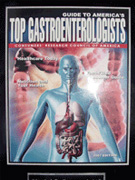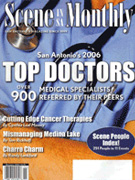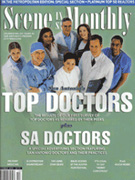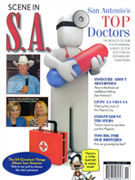Call us today: 1 (210) 615-8308

Flexible sigmoidoscopy is a procedure that enables your physician to examine the lining of the rectum and a portion of the colon (large bowel) by inserting a flexible tube that is about the thickness of your finger into your anus and advancing it slowly into the rectum and lower part of the colon.
WHAT PREPARATION IS REQUIRED?
The rectum and lower colon must be completely empty of waste material for the procedure to be accurate and complete. Your physician will give you detailed instructions regarding the cleansing routine to be used. In general, preparation consists of two enemas prior to the procedure. In some circumstances, for example, if you have acute diarrhea or colitis, your physician may advise you to forgo any special preparation before the examination.
WHAT ABOUT MY CURRENT MEDICATION?
Most medications can be continued as usual. You should inform your physician of all current medications as well as any allergies to medications several days prior to the examination. However, drugs such as aspirin or anticoagulants (blood thinners) are examples of medications whose use should be discussed with your physician. You should alert your doctor if you require antibiotics prior to undergoing dental procedures, since you may need antibiotics prior to sigmoidoscopy as well.
WHAT CAN BE EXPECTED DURING FLEXIBLE SIGMOIDOSCOPY?
Flexible sigmoidoscopy is usually well tolerated and rarely causes mush pain. There is often a feeling of pressure, bloating, or cramping at various times during the procedure. You will be lying on your left side while the sigmoidoscope is advanced through the rectum and colon. As the instrument is withdrawn, the lining of the intestine is carefully examined. The procedure usually takes anywhere from 5 to 15 minutes.
WHAT IF THE FLEXIBLE SIGMOIDOSCOPY SHOWS SOMETHING ABNORMAL?
If the doctor sees an area that needs evaluation in greater detail, a biopsy (sample of the colon lining) may be obtained and submitted to a laboratory for greater analysis. If polyps (growths from the lining of the colon which vary in size) are found, they can be biopsied, but usually are not removed at the time of the sigmoidoscopy. Polyps are of varying types; certain benign polyps, known as “adenomas” are potentially precancerous. Certain other polyps (“hyperplastic” by biopsy analysis) may not require removal. Your doctor will likely request that you have a colonoscopy (a complete examination of the colon) to remove any large polyp that is found, or any small polyp that is adenomatous after biopsy analysis.
WHAT HAPPENS AFTER A FLEXIBLE SIGMOIDOSCOPY?
After sigmoidoscopy, the physician will explain the results to you. You may have some mild cramping or bloating sensation because of the air that has been passed into the colon during the examination. This will disappear quickly with the passage of gas. You should be able to eat and resume your normal activities after leaving your doctor’s office or the hospital.
WHAT ARE POSSIBLE COMPLICATIONS OF FLEXIBLE SIGMOIDOSCOPY?
Flexible sigmoidoscopy and biopsy are generally safe and well tolerated when performed by physicians who have had special training and experience in these endoscopic procedures. While possible complications after flexible sigmoidoscopy are rare, it is important for you to recognize early signs of any possible complication. Contact your physician if you notice any of the symptoms: severe abdominal pain, fever and chills, or rectal bleeding of more than one half cup. It is important to note that some rectal bleeding can occur even several days after the biopsy.








